Poultry, Fisheries & Wildlife Sciences
Open Access
ISSN: 2375-446X
ISSN: 2375-446X
Research Article - (2023)Volume 11, Issue 2
Study background: Small Scale poultry production system in Somalia is mostly indigenous and an integral part of farming system in the whole country it is characterized by small flock, minimal input and disorganised market system. Poultry production are mainly used by planters in order to produce currency income and it is as the source of food for domestic and wildlife consumption. However, the study aimed to evaluate the production system of poultry by the case of challenges and opportunities to identify the scale of production in different poultry farms at Benadir region, Somalia.
Methodology: A purposive study was conducted from 1st April 2022-12th August 2022, the selected poultry farms were Deynile, Oodweyne and Darussalam. From the three selected sub-districts, the total samples were 100. In Deynile farms, were 29, Oodweyne farms were 34 and Darussalam farms were 37. Respectively, the primary and secondary data had collected by using questionnaires administrated via personal interviews. The information collected were included demographic characteristics of the poultry household, knowledge and practice of the poultry production farm systems.
Results: The overall challenges in poultry farms we had visited were about to 83.2% in the three (3) selected farms. The majority for poultry production system were non practiced farmers. In the area of the study was most villages of poultry production (63.3%) because most of the farmers use both poultry and other large animals. According to this study poultry is kept mainly for home consumption (62.1%), for income age group (38.5%) and for cultural standing (16.6%). However, the study area breeds were indigenous ecotype (57.6%). In the three (3) selected study area, used in different kind poultry of aged 3-4, semi aged 4-5 and>1 day age groups of poultry system and the challenge were estimated about incubation and other poultry management were 47.3%, bedding poultry were 25.5%, hot environment 32.2%, diseased chickens were 15.1%, and feed poultry shortage (afternoon and evening only) were also about 23.0% separately, though the highest number of poultry results were seen in one day age poultry. In our findings indicates poultry system with fair condition are most likely to be affected with the destroyed systems and calamite changes were affecting poultry production and productivity. Finally the authors recommend for further research to be done, there is needed education programs to be designed for this study, and community especially with the regard of poor handling challenges, and opportunity of poultry system.
Challenges; Opportunities; Poultry; Production farms; Benadir region Somalia
Poultry farming is widely practiced in global. Almost every farmstead keeps poultry for consumption, cash income, religious and cultural considerations. Poultry production has an important socioeconomic role in developing countries. Village poultry is affordable source of animal protein and sources of family income. Poultry is a source of self-reliance for women since, poultry and egg sales are decided by women [1].
Both of which provide women with an immediate income to meet household expenses and sources of food. Household poultry require limited space, feed and capital investment compared to other domestic animals kept in rural. Poultry production system in Somalia is indigenous and an integral part of farming system and predominantly prevailing in the country and it is characterized by small flock, minimal input and unorganized marketing system. Somalia has large population of chickens estimated with native chickens of non-disruptive breed. With regard to breed, 96.9 percent, 0.54 percent and 2.56 percent of the total poultry were reported to be indigenous, hybrid and exotic, respectively. Somali poultry production is characterized by primitive type with 5 birds-20 birds per household, simple rearing in backyard with inadequate farming and health care with small flock numbers [2].
Modern poultry production started in Somalia some years ago mainly in colleges and research station. The activities of these institutions mainly focused on the introduction of exotic breeds to the country and distribution of these breeds to the farmers including management, feeding housing and health care practices. Poultry production and management practices in Arbegona Woreda can be characterized by extensive poultry production system and productivity of village chickens is low owing disease prevalence, predators and poor management activities. Generally, the production system is characterized by small size of unimproved indigenous flock per household. Although there is a huge potential of keeping poultry in the study area, the system of production is traditional. As a result, chickens are exposed to many challenges and also the production system in the area is not yet assessed and documented [3].
Government of Somalia initiative in the 1960's to promote commercial poultry production resulted to the industry supplying about 95 percent of chicken meat and eggs in the country. Growth was initially slow, due to irregular supply of day-old chicks, other inputs and outbreaks of poultry diseases. However, in 1970's, the GOG as part of its support for the development of the poultry industry removed customs duties on poultry inputs-feed, additives, drugs, and vaccines including access to veterinary services. Since 2000, however, Somalia poultry sector has been experiencing a steep decline. Many, if not all, the commercial poultry farms including Darko Farms, Pomadze Farms, Afariwaa Farms, Midland Farms, Acme Hatchery etc that were established in the late 1960's and early 1970's have collapsed and/or are on the verge of collapsing and/or operating far below full capacity [4].
Study area and study design
The study was carried out in sub selected districts of poultry farms in Benadir region Somalia. Benadir is an administrative region and it is known as in Somali language (gobol). It is located in South-Eastern Somalia. It covers the same area as the city of Mogadishu, which serves as the capital. It is bordered to the Northwest by the Shebelle river, and to the southeast by the Indian Ocean. Although by far the smallest administrative region in Somalia, it has the largest population, estimated at 1,650,227 (including 369,288 internally displaced persons). Furthermore the researchers were selected three sub farms located in Benadir region Somalia namely: Oodweyne poultry farm located in Taredisho poultry farm located in Darussalam poultry farm located. The population of the three (3) sub district depending on their livelihood are agricultures, livestock and pastoralist particularly poultry, sheep and goat, dairy camel and dairy cattle Farm production are located in the zone. The study design was correlation design and correlation is to attempt the collection of data from members of a population in order to determine the current status of that population in respect to one or more variables. The research survey was therefore an adopted of the study which were required the collection of quantitative research information from the sample data [5].
Sampling procedure
Two (2) to Three (3) weeks before the start of the definite survey movement for the essential materials were made with concerned officials, chiefs and community leaders were also made to identify and explain the areas, where poultry production is suitable practiced. However, based on these officials, from the community were made the real survey. Therefore, the selected of the three (3) sub area were made identification of the sampling procedure namely: Oodweyne poultry farm located in Taredisho poultry farm located in Darussalam poultry farm located in were selected by purposive sampling technique due to the potential of the districts and their poultry production management system. The total samples were 84 (Oodweyne poultry farm=38, Taredisho poultry farm=25 and Darussalam poultry farm=21) house hold were practiced poultry production farms and used for interview of the sample [6].
Data collection technique and their instrument
The study were used administered questionnaire method to collect data from the sample chosen because questionnaire can be used to collect the information related to the feeling and attitudes of the people. Therefore, this study was concerned with variables that cannot be found through observation such as feeling and options of the respondents, such information is best collection through questionnaire. The selection of this tool has been guided by the nature of the data to be collected; the availability of time and the objective of the study [7].
Statistical data analysis
Descriptive statistical measures such as percentages and frequencies were used to analyse closed ended questions/ statements. These techniques were usually able to employ factual information about a situation to provide an understanding of performance levels. The colected data were edited for accuracy, consistency, uniformity and completeness and analysed with the results presented in tables, bar charts and pie charts. After that, tabulated and analysed by using frequencies, percentages, mean scores and standard deviation measures by using SPSS computer software application (Statistical package for social sciences). Cross-tabulation analysis were also applied to derive for any relationships between the dependent and independent variables [8].
This is the represents the findings of the study. It also analyses and discusses the findings of the study as per set objectives of the study. It first provides the profile of the respondents before presenting, analysing and discussing the findings [9].
Table 1 shows that the majority of the respondents 32 (72.7%) were males, on the other hand the minority of the respondents 12 (27.3%) were female (Figure 1).
| Gender | |||||
|---|---|---|---|---|---|
| Frequency | Percent | Valid Percent | Cumulative Percent | ||
| Valid | Male | 32 | 72.7 | 72.7 | 72.7 |
| Female | 12 | 27.3 | 27.3 | 100 | |
| Total | 44 | 100 | 100 | ||
Table 1: Demographic characteristics of the respondents.
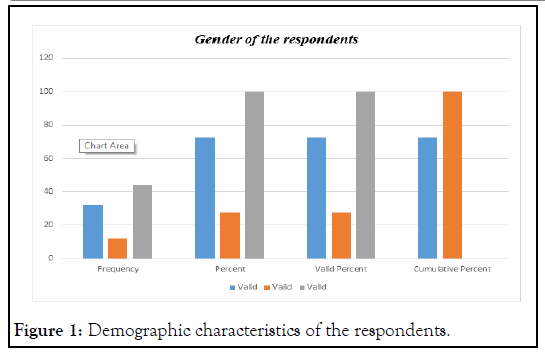
Figure 1: Demographic characteristics of the respondents.
The table 2 indicates that the different age of the respondents and shows that majority of the respondents 28 (63.3%) were aged b/w 20-30. on the other hand the minority of the respondents 16 (36.4%) were aged b/w 31-40 (Figure 2).
| Age | Frequency | Percent | Valid Percent | Cumulative Percent | |
|---|---|---|---|---|---|
| Valid | 20-30 | 28 | 63.6 | 63.6 | 63.6 |
| 31-40 | 16 | 36.4 | 36.4 | 100 | |
| Total | 44 | 100 | 100 | ||
Table 2: Age of the respondent.
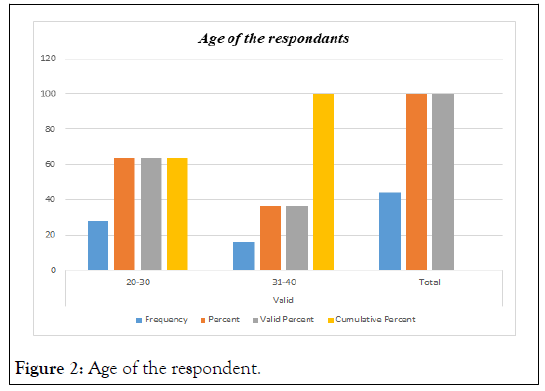
Figure 2: Age of the respondent. Table 3:
Table 3 shows that majority of the respondents 32 (72.7%) were single, on the other hand the minority of the respondents 12 (27.3%) were married (Figure 3).
| Status | Frequency | Percent | Valid Percent | Cumulative Percent | |
|---|---|---|---|---|---|
| Valid | single | 32 | 72.7 | 72.7 | 72.7 |
| married | 12 | 27.3 | 27.3 | 100 | |
| Total | 44 | 100 | 100 | ||
Table 3: Status of the respondents.
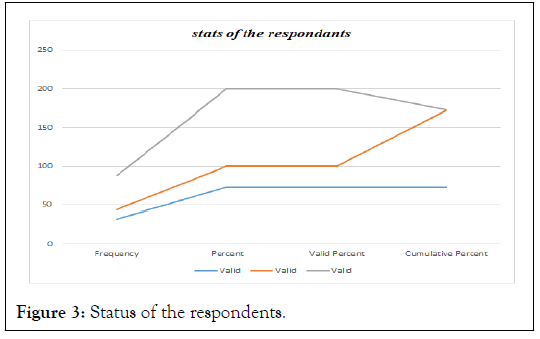
Figure 3: Status of the respondents.
Table 4 confirms that majority of the respondents 25 (56.8%) were bachelor, on the other hand the minority of the respondents 19 (43.2%) were master (Figure 4).
| Education | |||||
|---|---|---|---|---|---|
| Frequency | Percent | Valid percent | Cumulative percent | ||
| Valid | Readings | 25 | 56.8 | 56.8 | 56.8 |
| Non-readings | 19 | 43.2 | 43.2 | 100 | |
| Total | 44 | 100 | 100 | ||
Table 4: Education of the responds in study area.
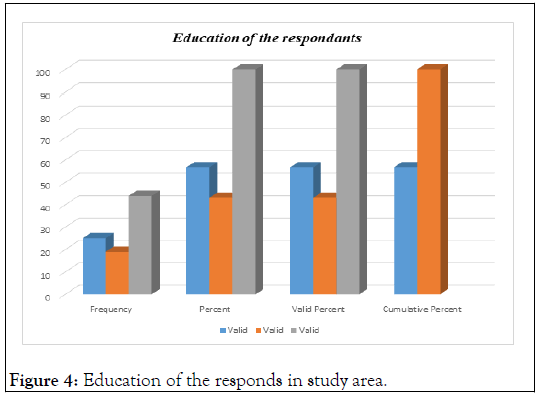
Figure 4: Education of the responds in study area.
Table 5 shows that majority of the respondents 21 (47.7%) were 2 years-3 years experienced on the other hand the majority of the respondents 11 (25.0%) were 1 year-2 years experienced and the majority of the respondents 8 (18.2%) were 3 years-4 years experienced and another respondents 4 (9.1%) were 4 years-5 years experienced (Figure 5).
| Experience | |||||
|---|---|---|---|---|---|
| Frequency | Percent | Valid Percent | Cumulative Percent | ||
| Valid | 1 year-2 years | 11 | 25 | 25 | 25 |
| 2 years-3 years | 21 | 47.7 | 47.7 | 72.7 | |
| 3 years-4 years | 8 | 18.2 | 18.2 | 90.9 | |
| 4 years-5 years | 4 | 9.1 | 9.1 | 100 | |
| Total | 44 | 100 | 100 | ||
Table 5: Experiences of the respondents.
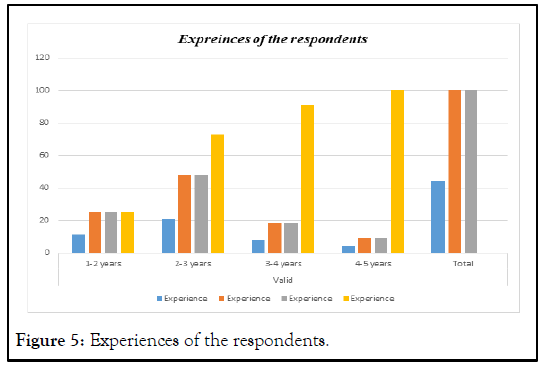
Figure 5: Experiences of the respondents.
Table 6 demonstrates that the majority of the respondents 12 (27.3%) strongly disagree that globalization has produced new forms of social exclusion, new sources of insecurity and precariousness. 9 (20.5%) disagreed the same concept, and 8 (18.2%) were neutral, and 8 (18.2%) strongly agreed that globalization has produced new forms of social exclusion, new sources of insecurity and precariousness. While 7 (15.9%) strongly disagree (Figure 6) [10].
| Challenges and opportunities | |||||
| Frequency | Percent | Valid Percent | Cumulative Percent | ||
|---|---|---|---|---|---|
| Valid | strongly disagree | 12 | 27.3 | 27.3 | 27.3 |
| Disagree | 9 | 20.5 | 20.5 | 47.7 | |
| Neutral | 7 | 15.9 | 15.9 | 63.6 | |
| Agree | 8 | 18.2 | 18.2 | 81.8 | |
| strongly agree | 8 | 18.2 | 18.2 | 100 | |
| Total | 44 | 100 | 100 | ||
Table 6: Challenges and opportunities of the respondents.
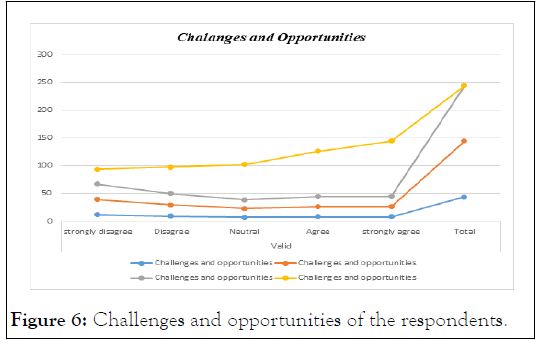
Figure 6: Challenges and opportunities of the respondents.
Table 7 demonstrates that the majority of the respondents 13 (29.5%) agreed that production, consumption and constraints of poultry in Somalia to deliver summarized and synthesized information for the beneficiaries and readers. 12 (27.3%) disagreed the same concept, and 8 (18.2%) were strongly agreed, and 6 (13.6%) strongly agree that production, consumption and constraints of poultry in Somalia to deliver summarized and synthesized information for the beneficiaries and readers. And 5 (11.4%) were strongly disagree (Figure 7) [11].
| The production, consumption and constraints of poultry | |||||
| Frequency | Percent | Valid Percent | Cumulative Percent | ||
|---|---|---|---|---|---|
| Valid | strongly disagree | 5 | 11.4 | 11.4 | 11.4 |
| disagree | 12 | 27.3 | 27.3 | 38.6 | |
| neutral | 8 | 18.2 | 18.2 | 56.8 | |
| agree | 13 | 29.5 | 29.5 | 86.4 | |
| strongly agree | 6 | 13.6 | 13.6 | 100 | |
| Total | 44 | 100 | 100 | ||
Table 7: The production, consumption and constraints of poultry.
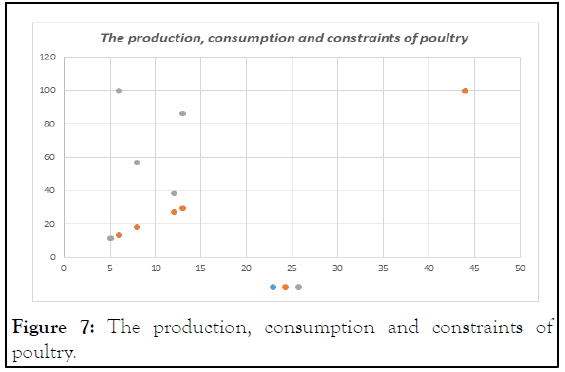
Figure 7: The production, consumption and constraints of poultry.
Table 8 demonstrates that the majority of the respondents 19 (43.2%) neutral that commercial poultry production system, small-scale commercial poultry production system and village or backyard poultry production system 11 (25.0%) were disagree the same concept, and 8 (18.2%) were agreed, and 6 (13.6%) neutral commercial poultry production system, small-scale commercial poultry production system and village or backyard poultry production system (Figure 8) [12].
| Commercial poultry production system, small-scale | |||||
| Frequency | Percent | Valid Percent | Cumulative Percent | ||
|---|---|---|---|---|---|
| Valid | disagree | 11 | 25 | 25 | 25 |
| neutral | 19 | 43.2 | 43.2 | 68.2 | |
| agree | 8 | 18.2 | 18.2 | 86.4 | |
| strongly agree | 6 | 13.6 | 13.6 | 100 | |
| Total | 44 | 100 | 100 | ||
Table 8: Commercial poultry production system, small-scale commercial poultry production system and village or backyard poultry production system.
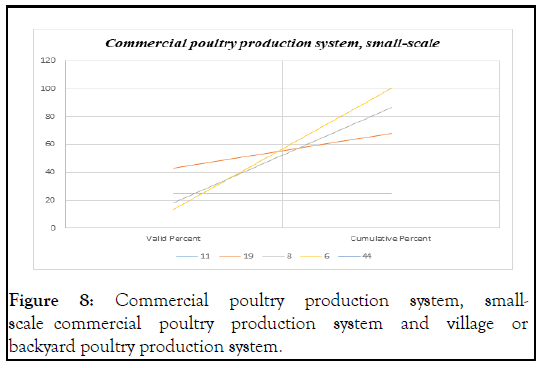
Figure 8: Commercial poultry production system, smallscale commercial poultry production system and village or backyard poultry production system.
Table 9 demonstrates that the majority of the respondents 23 (52.3%) neutral that poultry products offer affordable quality animal protein sources for the smallholder farm households. 15 (34.1%) were disagree the same concept, and 6 (13.6%) were agreed, poultry products offer affordable quality animal protein sources for the smallholder farm households (Figure 9) [13].
| Poultry products offer smallholder farm households | |||||
| Frequency | Percent | Valid Percent | Cumulative Percent | ||
|---|---|---|---|---|---|
| Valid | disagree | 15 | 34.1 | 34.1 | 34.1 |
| neutral | 23 | 52.3 | 52.3 | 86.4 | |
| strongly agree | 6 | 13.6 | 13.6 | 100 | |
| Total | 44 | 100 | 100 | ||
Table 9: Poultry products offer affordable quality animal protein sources for the smallholder farm households.
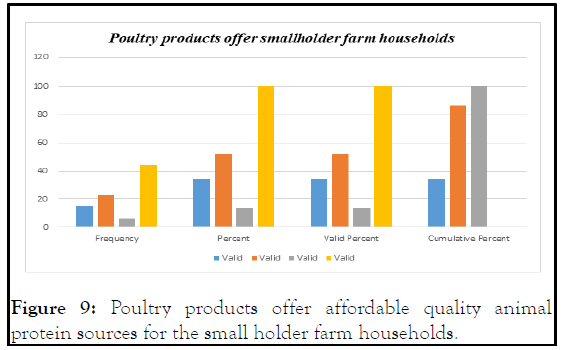
Figure 9: Poultry products offer affordable quality animal protein sources for the small holder farm households.
Table 10 demonstrates that the majority of the respondents 13 (29.5%) were agree that these are large scale commercial poultry production system, small-scale commercial poultry production system and village or backyard poultry production system, 12 (27.3%) disagree the same concept, and 8 (18.2%) were strongly disagree, and the other respondents 6 (13.6%) were strongly agree the majority of the respondents 5 (11.4%) were strongly agreed. These are large scale commercial poultry production system, smallscale commercial poultry production system and village or backyard poultry production system (Figure 10) [14].
| The large scale commercial poultry production system, and small-scale commercial poultry production system | |||||
| Frequency | Percent | Valid Percent | Cumulative Percent | ||
|---|---|---|---|---|---|
| Valid | Strongly disagree | 5 | 11.4 | 11.4 | 11.4 |
| disagree | 12 | 27.3 | 27.3 | 38.6 | |
| neutral | 8 | 18.2 | 18.2 | 56.8 | |
| agree | 13 | 29.5 | 29.5 | 86.4 | |
| strongly agree | 6 | 13.6 | 13.6 | 100 | |
| Total | 44 | 100 | 100 | ||
Table 10: The large scale commercial poultry production system, small-scale commercial poultry production system and village or backyard poultry production system.
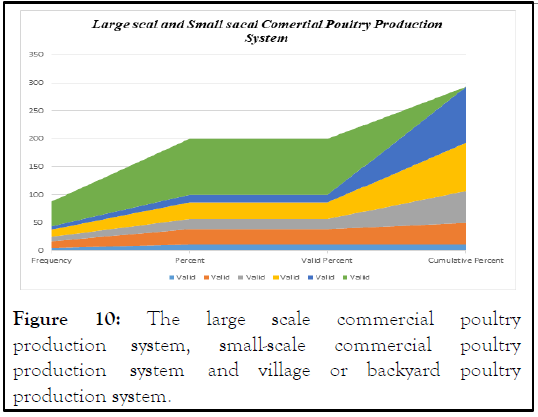
Figure 10: The large scale commercial poultry production system, small-scale commercial poultry production system and village or backyard poultry production system.
Table 11 demonstrates that the majority of the respondents 15 (34.1%) were agree that poultry products offer affordable quality animal protein sources for the smallholder farm households. 10 (22.7%) disagree the same concept, and 8 (18.2%) were disagree, and the other respondents 7 (15.9%) were strongly disagree the majority of the respondents 4 (9.1%) were strongly agreed poultry products offer affordable quality animal protein sources for the smallholder farm households (Figure 11) [15].
| Poultry products | |||||
| Frequency | Percent | Valid Percent | Cumulative Percent | ||
|---|---|---|---|---|---|
| Valid | strongly disagree | 7 | 15.9 | 15.9 | 15.9 |
| Disagree | 8 | 18.2 | 18.2 | 34.1 | |
| Neutral | 10 | 22.7 | 22.7 | 56.8 | |
| Agree | 15 | 34.1 | 34.1 | 90.9 | |
| strongly agree | 4 | 9.1 | 9.1 | 100 | |
| Total | 44 | 100 | 100 | ||
Table 11: Poultry products sources from smallholder and households.
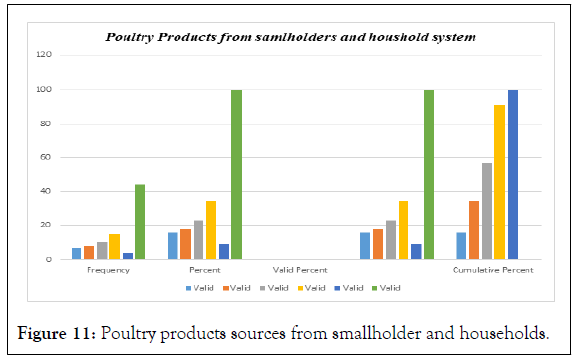
Figure 11: Poultry products sources from smallholder and households.
Poultry production system
For the three (3) sub study area the available poultry production system were three types: Intensive, extensive and semi-intensive poultry production system as indicates in Table 12 below. According to result finds, the extensive poultry production were [16].
| Production System | Teredishe Poultry Farm | Darussalam Poultry Farm | Oodweyne Poultry Farm | Total |
|---|---|---|---|---|
| Extensive system | 50 | 33 | 24 | 100 |
| Intensive system | 7 | 8 | 6 | 21 |
| Semi-intensive system | 4 | 5 | 4 | 13 |
Table 12: Poultry production system in the study area.
This table shows that the extensive poultry production system is much more both traditional and intensive poultry production system.
On the breeds of chicken existing in the study area were depicted on the above Table 13. The finding revealed that more than 55% the respondent in the study area that they normally uses local breeds of chicken due to the availability of local birds and poor resistance ability then exotic breed of chicken [17].
| Breed System | Teredishe Poultry Farm | Darussalam Poultry Farm | Oodweyne Poultry Farm | Total |
|---|---|---|---|---|
| Exotic breed | 95 | 45 | 51.1 | 55.1 |
| Local Breed | 80 | 41.2 | 38 | 50 |
| Exotic and local | -- | 25 | 22.1 | 18.1 |
Table 13: Breed system in the study area.
For In the household of the study area were shown that the majority of the respondents 32 (72.7%) were males, on the other hand the minority of the respondents 12 (27.3%) were female. Therefore, similar results were reported by Sossidou et al., and Wang and Guo were noted that males were highly involved in small scale poultry production compared to females. There is also other studies reported by the majority of female in poultry production system. However, the result contradicted with the report of Nebiyu et al. who noted that females involved in poultry farming more than males. Therefore, the respondent aged group in the study area were shown that the majority of the respondents 28 (63.3%) were aged b/w 20-30. On the other hand the minority of the respondents 16 (36.4%) were aged b/w 31-40 [18].
This results were similar with the report Emaikwu, et al. Determinants of flock size in broiler production in Kaduna state of Nigeria. While other findings of the study area were the number of married households involved in poultry production in the study shown that majority of the respondents 32 (72.7%) were single, on the other hand the minority of the respondents 12 (27.3%) were married. That the results shown that majority of the respondents 25 (56.8%) were bachelor, on the other hand the minority of the respondents 19 (43.2%) were master. Also were shown that majority of the respondents 21 (47.7%) were 2 years-3 years experienced on the other hand the majority of the respondents 11 (25.0%) were 1 years-2 years experienced and the majority of the respondents 8 (18.2%) were 3 years-4 years experienced and another respondents 4 (9.1%) were 4 years-5 years experienced. Therefore the challenges and opportunities for poultry production system in small and large scale indicated that bellow [19].
Challenges and opportunities for poultry production system
The results were demonstrates that the majority of the respondents 12 (27.3%) strongly disagree that globalization has produced new forms of social exclusion, new sources of insecurity and precariousness. 9 (20.5%) disagreed the same concept, and 8 (18.2%) were neutral, and 8 (18.2%) strongly agreed that globalization has produced new forms of social exclusion, new sources of insecurity and precariousness. While 7 (15.9%) strongly disagree. The Sam results were reported by Ibrahim. Other hands it was demonstrated that the majority of the respondents 13 (29.5%) agreed that production, consumption and constraints of poultry in Somalia to deliver summarized and synthesized information for the beneficiaries and readers. 12 (27.3%) disagreed the same concept, and 8 (18.2%) were strongly agreed, and 6 (13.6%) strongly agree that production, consumption and constraints of poultry in Somalia to deliver summarized and synthesized information for the beneficiaries and readers. And 5 (11.4%) were strongly disagree. It was confirmed that the majority of the respondents 15 (34.1%) agreed that the poultry sector in Somalia can be characterized into three major production systems based on some selected parameters such as breed, flock size, housing. 10 (22.7%) neutral the same concept, and 8 (18.2%) were agreed, and 7 (15.9%) strongly disagree that the poultry sector in Somalia can be characterized into three major production systems based on some selected parameters such as breed, flock size, housing. And 4 (9.1%) were strongly agree it were proved that the majority of the respondents 19 (43.2%) neutral that commercial poultry production system, small-scale commercial poultry production system and village or backyard poultry production system 11 (25.0%) were disagree the same concept, and 8 (18.2%) were agreed, and 6 (13.6%) neutral commercial poultry production system, small-scale commercial poultry production system and village or backyard poultry production system therefore it was demonstrated that the majority of the respondents 23 (52.3%) neutral that poultry products offer affordable quality animal protein sources for the smallholder farm households. 15 (34.1%) were disagree the same concept, and 6 (13.6%) were agreed, poultry products offer affordable quality animal protein sources for the smallholder farm households. Similar repot were made by Mtileni, et al. Also it was validated that the majority of the respondents 15 (34.1%) were agree that poultry industry removed customs duties on poultry inputs-feed, additives, drugs, and vaccines including access to veterinary services. 12 (27.3%) neutral the same concept, and 8 (18.2%) were strongly disagree, and the other respondents 5 (11.4%) were disagree that poultry industry removed customs duties on poultry inputs-feed, additives, drugs, and vaccines including access to veterinary services [20].
The study was to determine challenges and opportunities and commercial poultry production system in Benadir region- Somalia. Based on the present revealed that disease, shortage of feed and predators were the most the dominant challenge for poultry production. In the case of opportunities of poultry farm it is so huge and people of the study area needs awarded and studies, however, every year the is many farms who makes poultry farms and they normally fail due to lack of knowledge and other challenges. Some farms that we have visited and we asked oral questions they told us that have made more than three times failed. Poultry farmers need training in all aspects of production and management such as feeding, breeding, housing, health and free enterprise. Special care should be put on emerging the national animal feeds industry using the supply chain approach. Therefore, the entire poultry value chain of Somalia needs special attention in the study selected areas of research allowance and developments to propel it to international standards it is determined that development of poultry service, and extension package for involvement to improve the productivity and economics contribution of poultry production system both small and large scale with nongovernmental organizations and local government support also needed. Adaptive research is also required for testing and evaluating improved of poultry production system so to evaluate the basic challenges and opportunities of poultry production in Somalia.
The authors are very appreciative to Benadir university department of animal production system, particularly small animal production section. From the beginning to the final stage of our research, furthermore, fieldwork and data collection. The writers would like to express their very special thanks to our families for their support and encouragement by finalizing this work.
[Crossref] [Google Scholar] [PubMed]
[Crossref] [Google Scholar] [PubMed]
[Crossref] [Google Scholar] [PubMed]
[Crossref] [Google Scholar] [PubMed]
[Crossref] [Google Scholar] [PubMed]
[Crossref] [Google Scholar] [PubMed]
[Crossref] [Google Scholar] [PubMed]
Citation: Barre A, Hirabe AH, Ali SB, Ali MA, Ahmed SH, Yusuf DH (2023) Challenges and Opportunities of Small and Large Scale Poultry Production System in Some Selected Farms at Banadir Region, Somalia. Poult Fish Wildl Sci. 11:231.
Received: 11-Nov-2022, Manuscript No. PFW-22-20076 ; Editor assigned: 15-Nov-2022, Pre QC No. PFW-22-20076 (PQ); Reviewed: 29-Nov-2022, QC No. PFW-22-20076 ; Revised: 13-Jan-2023, Manuscript No. PFW-22-20076 (R); Published: 20-Jan-2023 , DOI: 10.35248/2375-446X.23.11.231
Copyright: © 2023 Barre A, et al. This is an open-access article distributed under the terms of the Creative Commons Attribution License, which permits unrestricted use, distribution, and reproduction in any medium, provided the original author and source are credited.